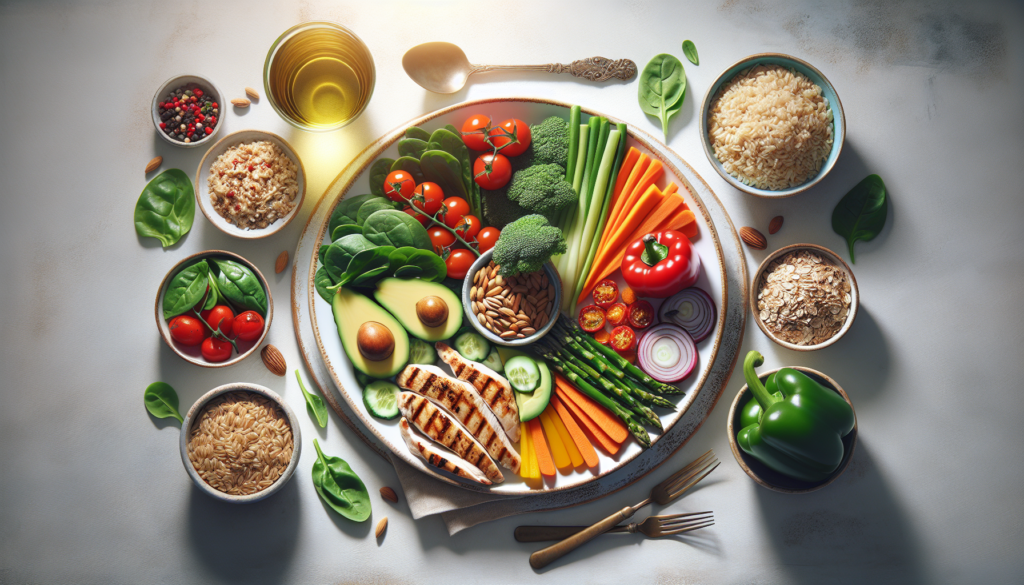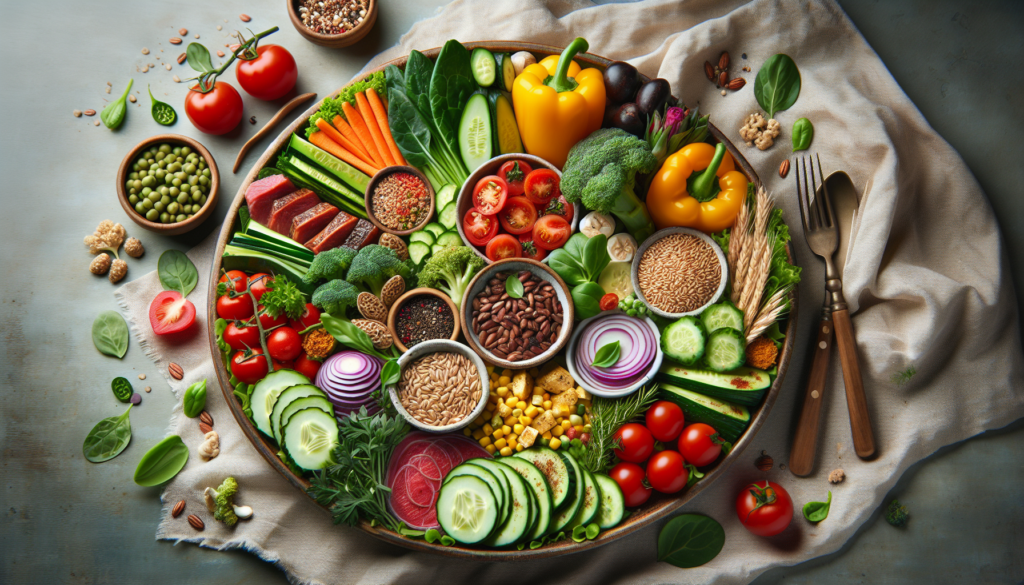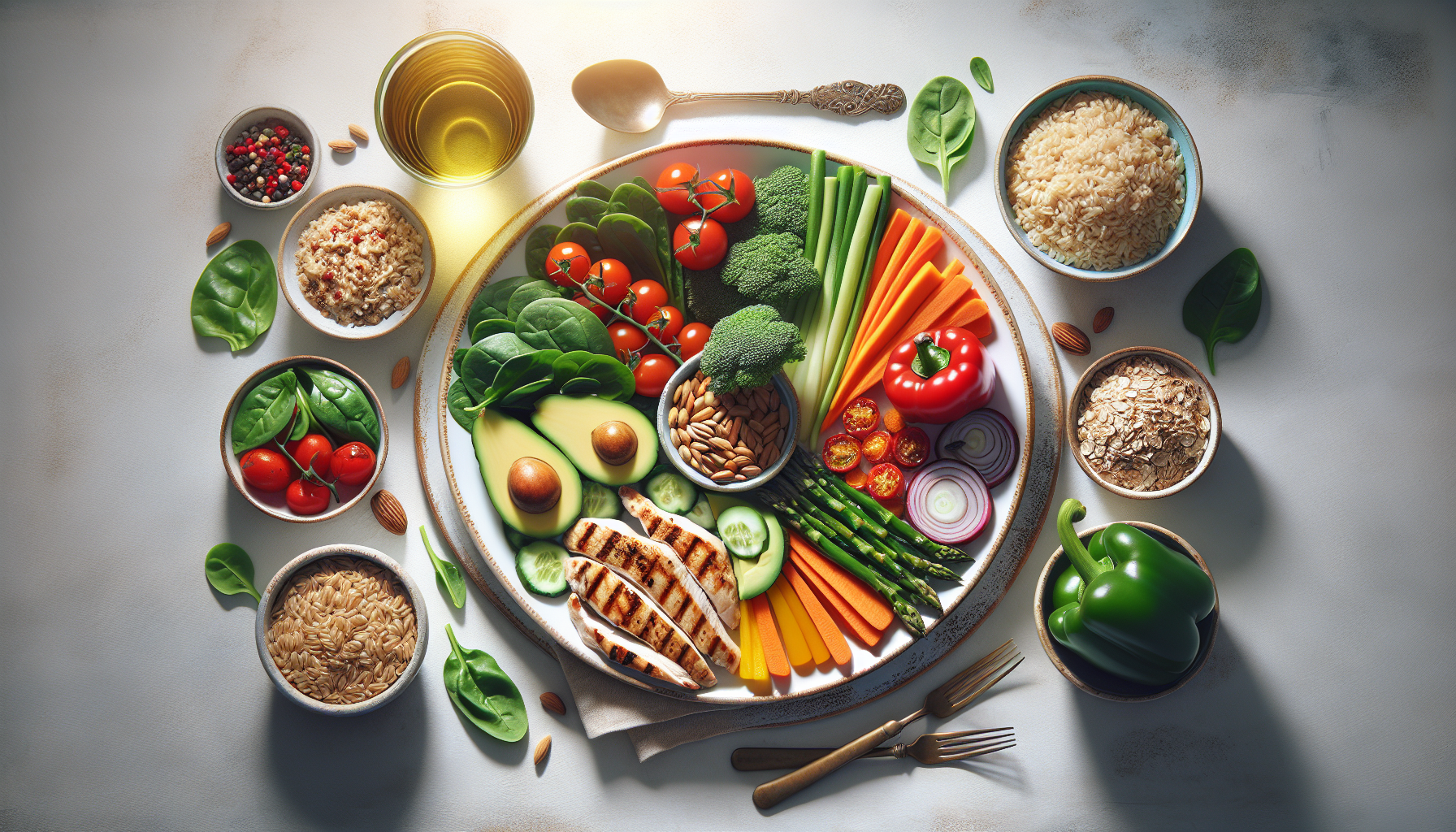Have you ever found yourself standing in front of the open refrigerator door, staring into its chilling abyss, hoping for some intelligent life form to emerge and magically prepare your dinner? It’s a scene as common as your dentist reassuring you that “it’s just a little cavity.” Finding the right balance for your weekly meals can feel as perplexing as a toddler who insists on wearing socks on their hands. But don’t worry, help is at hand—besides, socks are much better suited for your feet.
This guide is designed to provide you with a roster of entertaining strategies and delicious insights that will transform the daunting task of weekly meal prep into a sprightly dance of nutritional victory. Let’s embark on this culinary escapade together, embracing the array of food that will fortify you with the energy of a caffeinated squirrel!
Understanding the Basics of Meal Structuring
Before you embark on this flavorful journey of meal structuring, it’s imperative to grasp the foundational concepts—much like you need to understand the basics of yoga before attempting to contort yourself into a human pretzel. Structuring your meals isn’t just about choosing the least risky option in a buffet line; it involves diverse components that are critical for optimizing health.
Nutrient Richness: Your Secret Superpower
Every great meal structure begins with your body’s best friends: proteins, carbohydrates, and fats. These macronutrients are like the Three Musketeers of nutrition—fighting the good fight to keep you energized and satisfied.
-
Proteins: These are the building blocks of your body, like the bricks at Legoland. They help repair tissues, build muscles, and occasionally double as spare parts in case of minor bodily malfunctions.
-
Carbohydrates: Carbs often get a bad rap, but they’re the real MVPs of energy production. Yes, they can be found sneaking around in cookies, but focus on complex carbohydrates like whole grains, fruits, and veggies.
-
Fats: Not all fats are created equal. Healthy fats, found in avocados and nuts, are like the hipster fats of nutritional circles—always underestimated but surprisingly beneficial.
Micronutrients: The Unsung Heroes
If macronutrients are the leading actors in your nutritional play, then micronutrients are the supporting cast, deserving an honorary Oscar for their silent yet vital roles. Vitamins, minerals, and phytonutrients are essential for overall health, helping you maintain that superhero vibe without the need for a cape.
The Balance Act: Ensuring Nutritional Harmony
Imagine your meal structure as an orchestra where proteins, carbs, and fats hold the stage while micronutrients keep the tempo. The goal is to strike the right balance so you don’t end up with a culinary composition that’s all cymbals and no melody. Aim for variety in your meals, and remember, broccoli and Brussels sprouts need to be more than fashionable side dish accouterments.
Creating Your Weekly Meal Plan
Now that you’re equipped with nutritional knowledge akin to a middle school health class, it’s time to dive into the intricacies of meal planning. A well-structured meal plan is not only beneficial for your health, but it can also save you time, money, and your sanity—much like those infomercial gadgets that can slice and dice veggies in thirty different ways.
Step 1: Assess Your Dietary Needs
Before you start perusing Pinterest for quinoa salad inspiration, take a moment to evaluate your specific dietary needs. Are you trying to lose weight, bulk up, or just avoid scurvy? This self-reflection will determine how much protein, carbs, and fats you should prioritize in your diet. If you’re unsure, a quick consultation with a dietitian could be just what the doctor ordered.
Step 2: Embrace the Power of List-Making
A shopping list is your best friend when structuring weekly meals—it’s like a treasure map, leading you to the secret island of nutritious abundance. Writing everything down ensures you won’t wander around the grocery store like it’s a corn maze, and helps you avoid impulse buys that don’t align with your nutritional goals.
Step 3: Batch Cooking for Efficiency
Channel your inner Master Chef (minus the shouting Gordon Ramsay) and embrace the art of batch cooking. Prepare larger quantities of your favorite healthy dishes and store them in portioned containers, so you have easy grab-and-go meals. Plus, it gives you the street cred to nonchalantly use the word “meal-prep” in conversation.
Step 4: Keep Snacks in Check
Snacks are the cheeky little devils of dietary intake. Within a moment of weakness, they can deviate you from your meal plan like a bad GPS system. Opt for nutritious snacks like nuts and fresh fruit to balance your blood sugar levels and prevent your stomach from becoming a grumbling testament to poor snack choices.

Sample Weekly Meal Plan
To give you a kickstart into the whimsical world of meal planning, here’s a sample weekly meal plan that’s as smooth as a jazz saxophonist in a smoky club. Remember, this is just a framework—feel free to adjust based on personal tastes and the peculiarities of your own digestive melodrama.
| Day | Breakfast | Lunch | Dinner | Snacks |
|---|---|---|---|---|
| Monday | Oatmeal with berries | Quinoa salad | Grilled chicken with veggies | Greek yogurt with almonds |
| Tuesday | Smoothie with spinach | Turkey wrap with hummus | Baked salmon and asparagus | Apple slices with peanut butter |
| Wednesday | Scrambled eggs and toast | Lentil soup | Stir-fry tofu and broccoli | Dark chocolate (just a square!) |
| Thursday | Avocado toast | Chickpea salad | Beef stir-fry with bell peppers | Celery sticks with cream cheese |
| Friday | Yogurt parfait with granola | Couscous with roasted veggies | Shrimp tacos | Banana with walnuts |
| Saturday | Pancakes with banana | Grilled cheese sandwich | Vegetable curry with rice | Popcorn (hold the butter) |
| Sunday | Bagel with smoked salmon | Tomato basil soup | Roasted chicken with potatoes | Mixed Berries |
Making Adjustments for Special Diets
Not all dietary paths are paved in stone-ground oat flour. From veganism to gluten-free, dietary needs vary like a circus of food preferences and allergies. Tailoring your meal structure to accommodate specific needs means becoming the Michelangelo of your kitchen, sculpting the ideal meal plan with precision.
Vegan and Vegetarian Options
If you’ve chosen to align your diet with the munchies of a dedicated herbivore, options abound. Beyond tofu and tempeh, consider legumes, nuts, and seeds for hearty protein sources. The world of plant-based food is full of legumes lip-syncing in the most nutritious concert, so explore it thoroughly.
Gluten-Free Adjustments
A gluten-free diet can seem a touch intimidating, as gluten has a knack for hiding like a ninja in many of your favorite foods. But fear not! Focus on naturally gluten-free grains like quinoa, rice, and buckwheat and remember, there are beautifully packaged gluten-free cookies to rescue your sweet tooth.
Dairy-Free Considerations
For those avoiding dairy like the plague—or simply because your stomach requests it—almond milk, coconut yogurt, and cashew cheese can provide you with the richness they demand minus the lactose.

The Importance of Enjoying Your Meals
Lastly, never underestimate the importance of enjoying food. Eating healthy should not feel like you’re resigned to a life sentence of celery sticks and disdainful glances at ice cream. Striking a balance means indulging every so often, guilt-free—because let’s face it, life’s too short not to have cake.
Eating healthy is a habit best done with a pinch of humor and a dash of insight. So, banish those refrigerator blues and embrace meal planning with gusto, for in a world full of uncertainties, your meals can become the reliable friend who never forgets to call.
Finally, remember this: should you find yourself back at the fridge, staring into its enigmatic glow once more, let it not be out of helplessness but rather sheer admiration for the culinary symphony that you’ve so masterfully orchestrated. Bon appétit!
